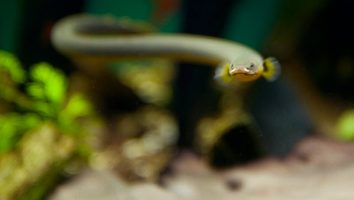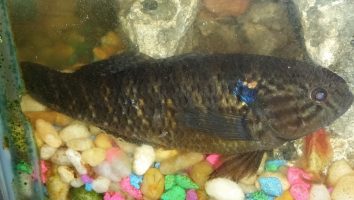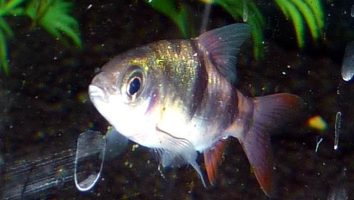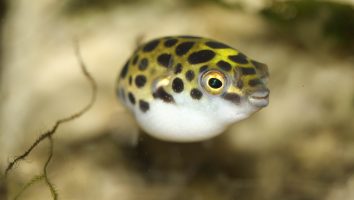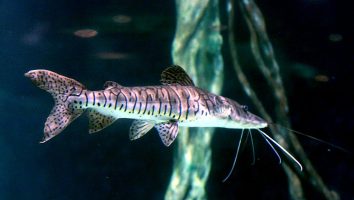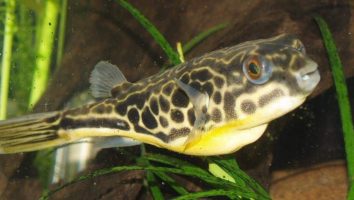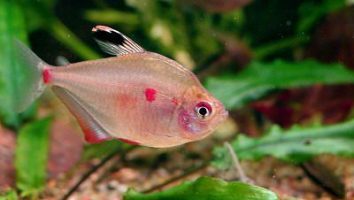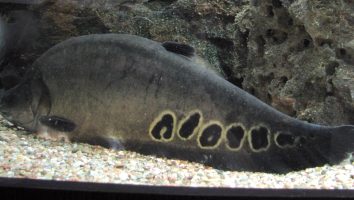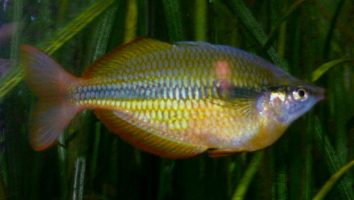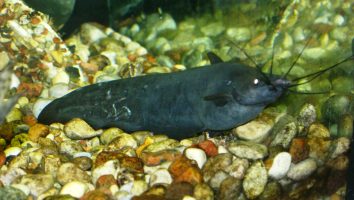The blue discus is a stunning freshwater fish that is prized by many aquarists.
This species is not only beautiful, but also relatively easy to care for. They are a perfect choice for beginner aquarists who want to add some color to their tank.
However, there are a few things you need to know about blue discus care before you add them to your tank. In this guide, we will teach you everything you need to know about caring for blue discus.
Table of contents
Species overview
The blue discus (scientific name: Symphysodon aequifasciatus) is a type of cichlid that’s native to the Amazon Basin in South America.
They are one of the most popular cichlids in the aquarium trade due to their eye-catching blue coloration.
Blue discus are mostly found in slow-moving rivers and flooded forests. They prefer areas with a lot of vegetation and plenty of hiding places.
In the wild, they primarily eat small insects and larvae. However, in captivity they will accept a wide variety of foods, including pellets, flakes, and frozen foods.
Blue discus are relatively peaceful fish, but they can be territorial toward their own species. Therefore, it’s important to keep them in a tank with plenty of space and hiding places.
Appearance
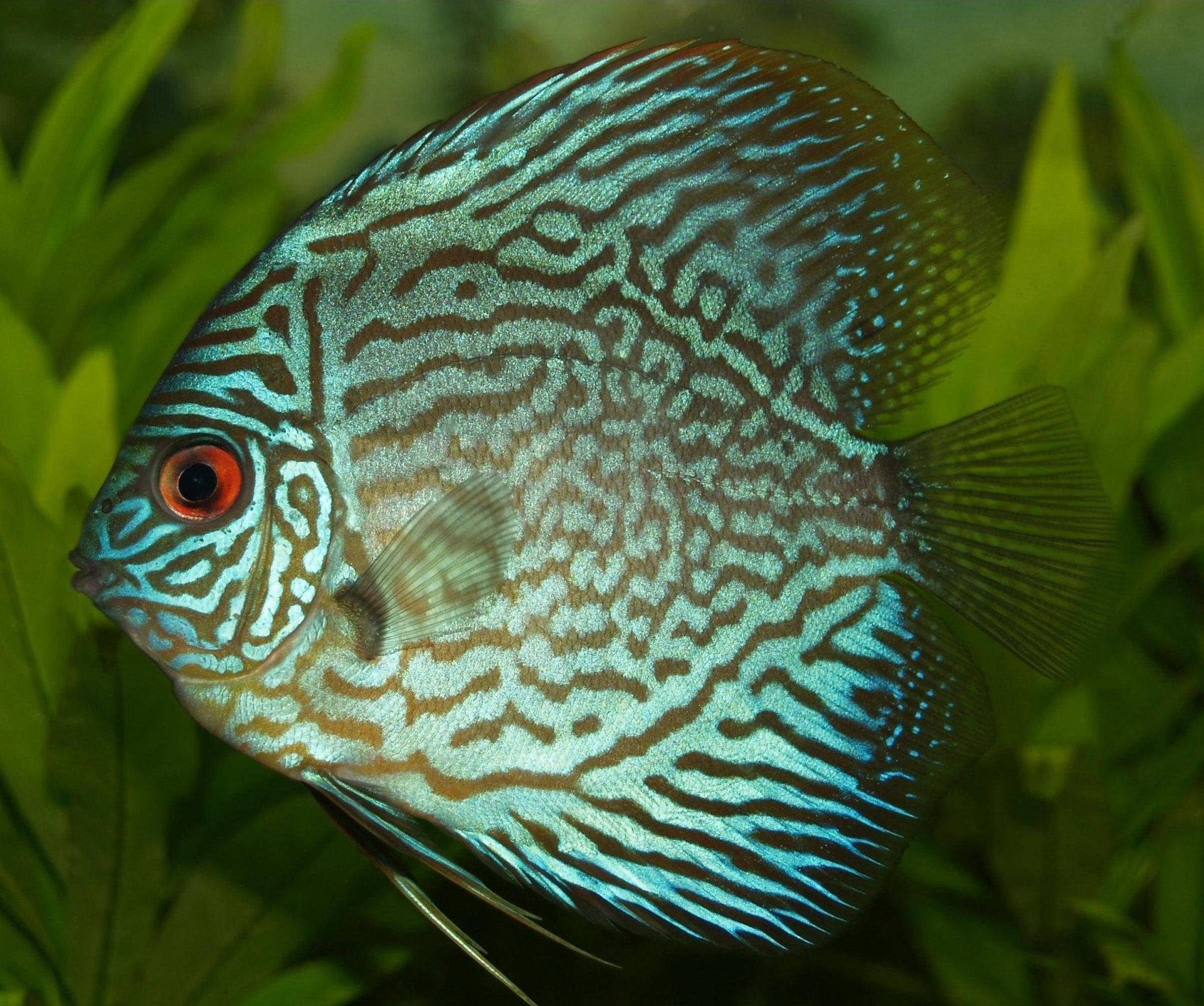
The first thing you’ll notice about this particular fish is their color. As the name suggests, they’re a beautiful blue color all over their body. The blue can range from a light sky blue to a much darker navy blue.
The fins on this fish are also blue and quite large. The dorsal fin is especially tall and starts about two-thirds of the way back on the body. The anal fin is a bit shorter but still quite tall.
The caudal fin is forked and symmetrical. The pectoral fins are also blue and fairly large. These fins help the fish to change directions quickly and make sudden stops.
The body of the Blue Discus is very round and stocky. This gives them a bit more of a slow and deliberate swimming style.
They have large eyes that are set fairly far apart on their head. They also have a large mouth that extends past their eyes.
Lifespan
The average lifespan of a blue discus is around 10 years. However, there are a number of factors that can impact their life expectancy.
For example, if they’re not kept in optimal conditions then their lifespan will be significantly shorter. This is true of all fish, not just blue discus.
The good news is that these fish are fairly easy to care for. As long as you provide them with a good diet and clean water, they should do well.
Size
The average Blue Discus size is between 6 and 8 inches. Some specimens have been known to grow a little larger, but this is quite rare.
Tank
Tank Size
The recommended tank size for blue discus fish is nothing less than 50 gallons. These fish are relatively large and need plenty of space to swim around and explore.
The good news is that you don’t need to worry about overstocking your tank with these fish. They’re not overly active and don’t need a lot of room to move around.
Water Parameters
The blue discus is a tropical fish that prefers warm water with a neutral to slightly acidic pH.
While they are very adaptable, it’s important to maintain consistent water parameters.
Here are some basic guidelines for keeping blue discus fish.
- Water temperature: 80 to 86 degrees Fahrenheit
- pH levels: 6.5 to 7.2
- Water hardness: 2 to 12 dGH
- Alkalinity Levels: 5 to 8 dKH
What To Put In Their Tank
When it comes to setting up an aquarium for blue discus, there are a few key things that you need to take into account.
The first is that these fish come from slow moving waters in the Amazon basin. This means that they’re not used to a lot of movement in their environment.
As a result, you’ll want to avoid anything that creates a lot of flow in their tank. That means things like power filters and powerheads are a no-go.
Instead, go with a canister filter that has a gentle flow rate. This will ensure that your fish are comfortable and not stressed out by the filtration system.
The second thing to take into account is that blue discus come from blackwater habitats. This means that the water in their natural environment is stained brown from all of the decomposing leaves and plants.
You can recreate this in your aquarium by using driftwood and adding some Indian Almond Leaves to the water. This will help lower the pH of the water and give it a more natural look.
The substrate in their tank should be dark in color to match their natural habitat. Something like black sand or dark gravel would work well.
As for plants, you can include some if you’d like. Just be sure to choose something that can tolerate lower pH levels (like java moss or anubias).
Common Diseases
Blue discus are considered to be rather hearty fish. They’re not as fragile as some other species, and they can withstand a wide range of water conditions.
With that being said, they’re not completely immune to disease. The most common illness that these fish experience is ich.
Ich is a very common freshwater fish disease that’s caused by a parasite. It’s easily recognizable because it appears as white spots on the body of your fish.
If you notice these spots on your blue discus (or any other fish), it’s important to take action immediately. Ich can quickly spread and kill your entire tank if it’s left untreated.
There are other potential diseases that can affect blue discus, but they’re not as common. Some other things to look out for are fungal infections, bacterial infections, and parasites.
As with any fish, the best way to keep your blue discus healthy is by maintaining a clean and stable tank. Water quality is extremely important for all fish, and it’s especially important for discus.
If you can keep the water in their tank clean and free of toxins, you’ll go a long way in preventing disease.
Behavior & Temperament
The blue discus is a beautiful but shy fish. It is not recommended for beginners. In the wild, they live in slow-moving waters and prefer to stay hidden among the plants.
In the aquarium, they will do the same. They are timid fish and may not come out to eat if there are other fish in the tank. It is best to keep them in a tank with other discus or peaceful fish.
Discus are social creatures and do best in groups. They will often school together. If you keep them with other fish, make sure the tank is big enough for all of them to have their own space.
Discus are not aggressive, but they can be territorial. They may chase other fish away from their hiding places.
Tank Mates
When it comes to blue discus tank mates, the options are a bit limited.
This species is peaceful, but they’re also shy. As a result, they do best when kept with their own kind or other similar fish.
The good news is that there are a few species that make good blue discus tank mates. Here are a few of the best options:
- Other discus fish
- Angelfish
- Tetras
- Rams
- Corydoras catfish
Breeding
The Blue Discus is a beautiful and popular freshwater fish. While they’re not the easiest fish to breed, it can be done with some patience and effort.
To start, you’ll need to set up a breeding tank. It should be at least 50 gallons and have soft, acidic water. You can use a sponge filter to keep the water clean.
Next, add some live plants and a few pieces of driftwood for hiding places. The plants are especially important because they help to keep the water quality stable.
When ready, add two females for every male. Spawning usually happens at night, so you may not see it happen.
The female will lay hundreds of eggs on the plants. The male will then fertilize them. After that, the parents will be removed from the tank.
The eggs will hatch in about three days. The fry will be very small, so you’ll need to feed them live foods like baby brine shrimp.
As they grow, you can start to add other foods to their diet. Once they’re big enough, you can move them to a larger tank.
Conclusion
The Blue Discus is a beautiful and unique fish that will surely stand out in your aquarium. They’re not the easiest fish to care for, but with some dedication and knowledge, you can successfully keep them healthy and happy.
If you’re up for the challenge, we say go for it! These fish are definitely worth the effort.

